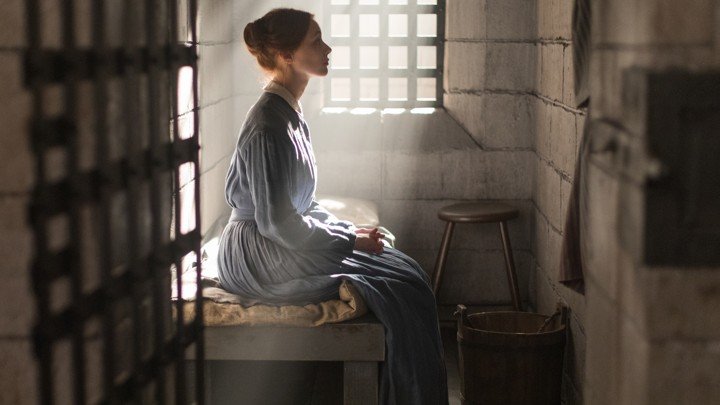Psychological Aliases, Crime and the Woman: Alias Grace
How does one begin talking about a book like Alias Grace by Margaret Atwood? It is easy to go by the generic definition of “historical fiction”, but I would define the novel as a pure work of art about a true crime that happened in 1843. Grace Marks alias Mary Whitney was sentenced for life as an accomplice to the murder of her then master Thomas Kinnear and Housekeeper Nancy Montgomery. It was believed at the time that she had conspired against them alongside her colleague James McDermott, who was later hanged, with his last words being “Grace Marks made me do it”. Grace was allegedly only 16 when she was convicted and was sent to the Kingston Penitentiary to spend her life sentence.
Grace Marks’ “truth” of being a convicted murderess aside, the novel by Margaret Atwood delineates a larger picture of her story, based on Susanna Moodie’s accounts (1970) of the murders. Atwood brings in a fictional psychiatrist/therapist named Dr. Simon Jordan who is allowed by the penitentiary to have regular interactions with Marks, in an attempt to get her exonerated. The novel incorporates the perspectives of both Marks and Jordan, who comment on their relationship which gradually becomes one of a romantic nature. It is, however, predominantly a retelling of Marks’ story as a young Irish migrant girl adjusting to life in Canada in the early 1800s, in flashbacks embedded in the main narrative.
I have always wanted to read Margaret Atwood. With the overwhelming attention given to The Handmaid’s Tale (1986), with the Hulu Original series featuring Elizabeth Moss, I was naturally drawn towards it although I have never been interested in Dystopian fiction much. I set that project aside (because while doing an English major you rarely get time to read any books other than course material), and bought The Blind Assassin (2000) from Shakespeare and Co. in Paris. I wanted a “dream book” to buy and although that store is filled with amazing books, I decided on it after approximately 3 or 4 hours of serious deliberation. Eventually though, what caught my attention was Alias Grace. I stumbled across it when I was researching texts for my dissertation, and even though I did not use it for that purpose, I immediately started reading it after I submitted my dissertation. Alias Grace is different from The Handmaid’s Tale and The Blind Assassin for many reasons (a future project is to do a comparison of these three novels, but I need to finish reading all of them first), with its basis being a true crime and the story of a real woman fictionalized in certain aspects.
Contemporary sketch of Grace Marks; Courtesy of Independent.ie
Atwood’s style focuses on framing Marks’ character as a woman with complex psychology, misunderstood, manipulated, and finally, mistreated. The hypnosis scene (whether one believes in such methods or not), paints her as a character with multiple personalities developed to suit society’s expectations as a maid, murderess, and a lowly immigrant. These socio-culturally curated personalities appear to have overpowered her real, unique personality, which comes through during the hypnosis, and even during her conversations with Dr. Jordan. Atwood portrays Marks as a once simple and innocent girl, who grew up shaped by her rather unpleasant experiences of child abuse by her father, the unwanted pregnancy and eventual death of her close friend Mary Whitney and the undefinable relationship between her masters Kinnear and Montgomery. While we may never know whether Marks was, in reality, guilty, or for what gain she committed the murders, Atwood provides us with a plausible and gripping backstory to her. This backstory makes me, as a reader, question women and their associations with crime, and the role the emotional and the psychological play in drawing them to committing such atrocities as murder.
Sarah Gadon as Grace Marks: Courtesy of The Atlantic
The Netflix adaptation of the novel was released in 2017, featuring Sarah Gadon as Marks, Edward Holcroft as Dr. Jordan, Anna Paquin as Montgomery, Paul Gross as Kinnear, Rebecca Liddiard as Whitney, and Kerr Logan as McDermott. I am just going to go ahead and say it: this adaptation is brilliant. The nuances in Atwood’s novel, especially in relation to the psychology of Marks and the relationship between Dr. Jordan and her, are captured via a captivating visual narrative. Turning pure language into a multimedia piece is difficult, but the team behind the miniseries has done it to perfection. The team consisted of Mary Harron as director, Sarah Polley as a writer, and of course, Atwood as one of the supervisors.
I remember this one scene: Marks piecing together her image of the Kinnear household. The camera impeccably follows her train of thought, and the house is recreated as if from her memory, just like the novel does through words, but with the added component of visuality here. Marks’ different versions of truth also come out effortlessly due to the committed performances by all the actors. Gadon shines as Marks, but more importantly, Liddiard and Paquin (what else can you expect from an actress who won an Academy Award when she was 11?!) do a fascinating job in their characters as women wronged, as much as Marks was. An approval of nod also goes to Holcroft who appears to be in his character’s skin throughout the series: the psychiatrist who is expected to keep a distance from his patient but cannot help but fall in love with her.
Overall, the novel and the series are both great creations together as well as on their own, which is a huge statement considering that we dismiss most adaptations as incomparable to their literary versions.
For those of you wondering, Marks was eventually pardoned and released from the penitentiary in 1872. She adopted the name of her friend Mary Whitney for future use.


